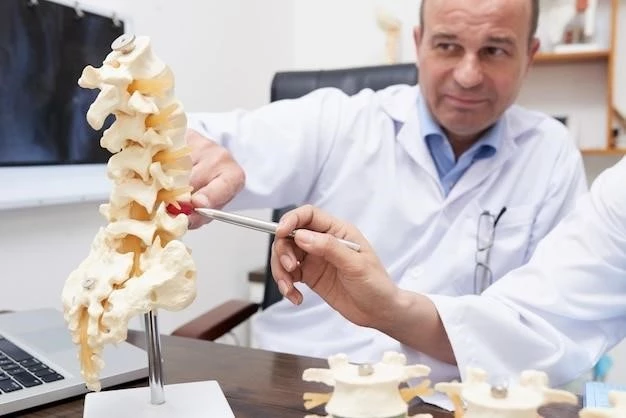Causes of Brittle Bone Syndrome⁚ Genetic factors and mutations in collagen genes contribute to the development of this rare bone disorder.
Causes of Brittle Bone Syndrome
Brittle Bone Syndrome, or Osteogenesis Imperfecta, is primarily caused by genetic mutations affecting collagen production, leading to fragile and easily breakable bones. These mutations can be inherited from parents or occur spontaneously. The most common genetic cause is mutations in the COL1A1 and COL1A2 genes٫ which are responsible for producing Type 1 collagen٫ a major component of bone tissue. Other less common genetic mutations can also result in Brittle Bone Syndrome. Understanding the genetic basis of the condition is crucial for diagnosis and management strategies. Genetic counseling can help families understand the risk of passing on the condition to future generations٫ while ongoing research aims to uncover new genetic factors contributing to the syndrome.
Medical Interventions
This section delves into the various medical approaches aimed at managing and treating Brittle Bone Syndrome effectively.
Treatment Options for Brittle Bone Syndrome
When it comes to Brittle Bone Syndrome, treatment focuses on managing symptoms, preventing fractures, and promoting bone health. Medical interventions often include bisphosphonates to increase bone density, physical therapy to improve muscle strength and coordination, braces to support bones, and surgeries to correct deformities or strengthen weakened bones. Additionally, lifestyle modifications such as a balanced diet rich in calcium and vitamin D, regular exercise tailored to individual needs, and fall prevention strategies are essential components of comprehensive treatment plans. Collaborating with a multidisciplinary team of healthcare professionals can ensure a personalized approach to care for individuals with Brittle Bone Syndrome.
Prevention of Brittle Bone Syndrome
Given that Brittle Bone Syndrome is primarily genetic in nature, prevention strategies focus on genetic counseling and early diagnosis for families at risk. Understanding the inheritance pattern of the condition can help individuals make informed reproductive choices. Prenatal testing can also play a crucial role in identifying the presence of genetic mutations associated with Brittle Bone Syndrome in the fetus. Additionally, ongoing research into gene therapy and emerging treatments may offer hope for preventing the development of the condition in future generations. By combining genetic knowledge with proactive healthcare measures, steps can be taken to potentially reduce the impact of Brittle Bone Syndrome on individuals and families.
Symptoms of Brittle Bone Syndrome
Brittle Bone Syndrome is characterized by fragile bones that break easily, often with minimal trauma. Individuals with this condition may experience frequent fractures, bone deformities, short stature, and skeletal abnormalities. Other symptoms can include hearing loss, blue sclerae (the whites of the eyes appear blue), and dental issues. Severe cases of Brittle Bone Syndrome may lead to chronic pain, mobility challenges, and high susceptibility to fractures throughout life. Recognizing these symptoms early on is crucial for prompt diagnosis and appropriate management to minimize complications and optimize quality of life for those affected by this rare bone disorder.
Living with Brittle Bone Syndrome
This section addresses the challenges, adaptations, and support needed for individuals managing the daily impact of Brittle Bone Syndrome.
Managing Pain in Brittle Bone Syndrome
Effective pain management in Brittle Bone Syndrome involves a multidisciplinary approach. Utilizing analgesic medications, physical therapy to improve muscle strength, and assistive devices for mobility support are common strategies. Additionally, psychological support, such as counseling and relaxation techniques, can help individuals cope with chronic pain. Educating patients on self-care techniques, injury prevention, and proper body mechanics is essential. Furthermore, staying informed about the latest research on pain management approaches tailored to Brittle Bone Syndrome can empower patients and healthcare providers to explore innovative strategies for enhancing quality of life and reducing discomfort associated with this condition.

Special Considerations
Exploring unique aspects such as the impact of Brittle Bone Syndrome on children and the challenges faced in managing this condition.
Brittle Bone Syndrome in Children
Brittle Bone Syndrome poses unique challenges in children, impacting their growth, development, and quality of life. Pediatric patients require specialized care to prevent fractures, promote mobility, and manage associated complications. Treatment approaches tailored to children may include physiotherapy, bracing, and surgical interventions to support bone health and minimize fractures. Psychological support for children and their families is essential for coping with the emotional aspects of the condition. Early intervention, regular monitoring, and collaborative care involving pediatric specialists play a crucial role in optimizing outcomes and ensuring a supportive environment for children living with Brittle Bone Syndrome.
Latest Research and Updates
Stay informed about the cutting-edge developments in Brittle Bone Syndrome research, including breakthrough treatments, genetic discoveries, and advancements in pain management. Keeping up-to-date with the latest findings is essential for healthcare professionals, researchers, and individuals affected by this rare bone disorder. Research efforts continue to uncover new insights into the underlying mechanisms of the condition and explore innovative approaches to enhance diagnosis, treatment, and quality of life for those with Brittle Bone Syndrome. By staying abreast of the latest research and updates, the healthcare community can collaborate to drive progress and improve outcomes for individuals living with this challenging condition;
